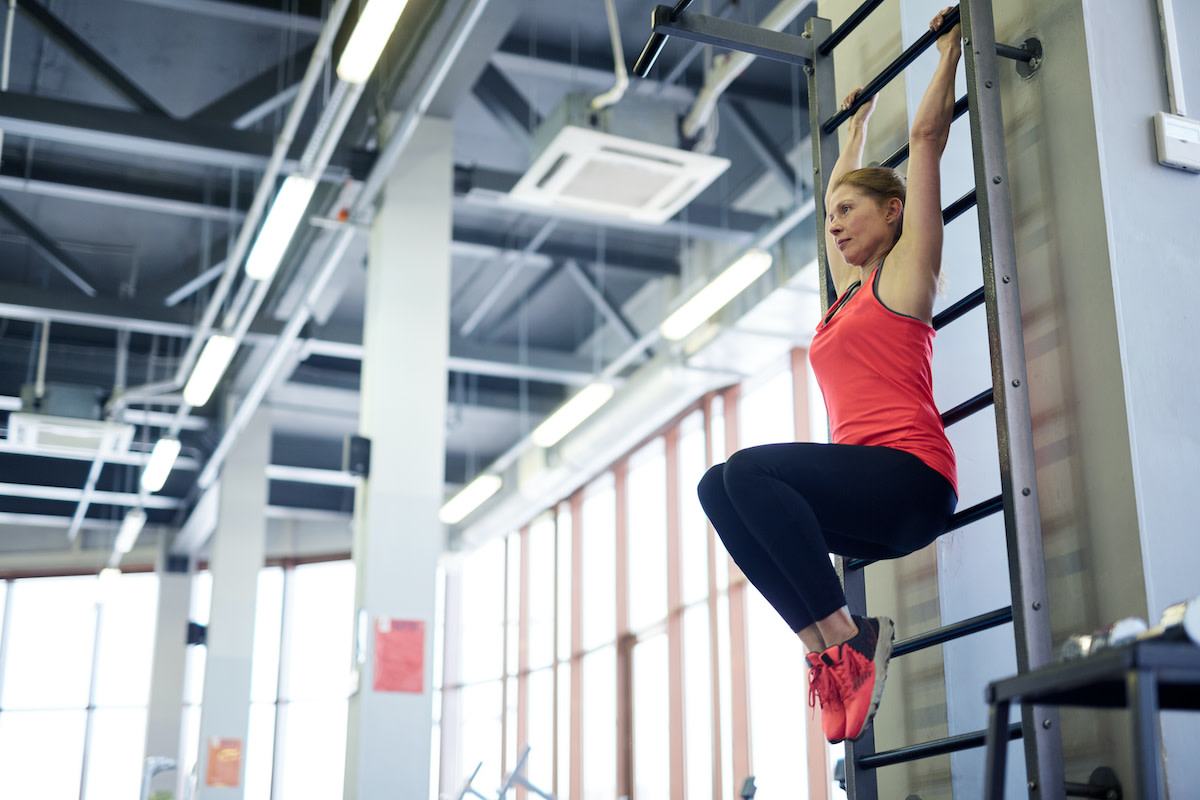How to Perform the Hanging Knee Raise Exercise
Written by MasterClass
Last updated: Jun 7, 2021 • 3 min read
If you’re searching for a new core exercise to include in your workout routine, consider practicing hanging knee raises.
Learn From the Best
What Is a Hanging Knee Raise?
The hanging knee raise is a calisthenics exercise that uses your bodyweight to activate muscles throughout your entire body, including your back, arm, and abdominal muscles. Practice the hanging knee raise exercise by gripping a pull-up bar with your hands slightly wider than shoulder-width apart. Engage your core as you lift your knees towards your chest. Lower your knees again with a controlled movement.
How to Do Hanging Knee Raises With Proper Form
For the hanging knee raise, begin by performing 2–3 sets of 8–15 repetitions. Choose your sets and repetitions based on your ability to maintain good technique throughout all sets and repetitions.
- 1. Grab a pull-up bar with an overhand grip, slightly wider than your shoulders.
- 2. Rotate your arms outward to engage your lats.
- 3. Engage your core to prevent your body from swinging. Keep your ribs down and your pelvis tucked.
- 4. Keep your spine neutral and your back muscles engaged throughout the movement. Your shoulders should be over your hips, and your shoulder blades should be in a neutral position to engage your upper back. Your knees can be bent or straight.
- 5. Squeeze your abs and your pelvis close toward your ribcage while your knees move toward your chest. Allow your pelvis to tuck to engage your abdominals.
- 6. Pause for a second at the top of the movement.
- 7. Allow your pelvis to slowly untuck and lower your knees and legs to your starting position.
- 8. Keep your abdominals engaged as you reach the starting position.
3 Benefits of Hanging Knee Raises
Incorporating hanging knee raises into your strength-training program can have several benefits:
- 1. Hanging knee raises enhance your core strength. The primary muscle worked during the hanging knee raise is your rectus abdominis, or the six-pack core muscle. Unlike other core workouts, like crunches and sit-ups, hanging knee raises engage your lower abs.
- 2. Hanging knee raises increase mobility in your midsection. The hanging knee raise activates stabilizer muscles in your midsection, including your hip flexors and lower back muscles.
- 3. Hanging knee raises improve your grip strength. With practice, hanging knee raises can build muscle in your forearms, enhancing your grip strength for compound exercises, like deadlifts and pull-ups.
5 Hanging Knee Raise Variations
Once you’ve practiced the standard hanging knee raise, consider trying one of these variations:
- 1. Weighted knee raise: For a more challenging variation, attach ankle weights or hold a dumbbell between your knees while going through the range of motion of a hanging knee raise exercise.
- 2. Captain's chair knee raise: If you’re having trouble holding your body up with your arms above your head, use a captain’s chair at your local gym by placing your elbows against armrests next to your body while you lift your knees towards your chest.
- 3. Twisting hanging knee raise: By adding a twisting motion during the exercise, this variation emphasizes your ab muscles, particularly your oblique muscles.
- 4. Lying knee raise: For an easier variation, lie on your back as you slowly raise your knees towards your chest.
- 5. Hanging leg raise: Practice this straight leg variation by keeping your legs extended during the full range of motion.
How to Work out Safely and Avoid Injury
If you have a previous or pre-existing health condition, consult your physician before beginning an exercise program. Proper exercise technique is essential to ensure the safety and effectiveness of an exercise program, but you may need to modify each exercise to attain optimal results based on your individual needs. Always select a weight that allows you to have full control of your body throughout the movement. When performing any exercise, pay close attention to your body, and stop immediately if you note pain or discomfort.
In order to see continual progress and build body strength, incorporate proper warm-ups, rest, and nutrition into your exercise program. Your results will ultimately be based on your ability to adequately recover from your workouts. Rest for 24 to 48 hours before training the same muscle groups to allow sufficient recovery.
Want to Dive Deeper Into Your Wellness Journey?
Throw on some athleisure, fire up a MasterClass Annual Membership, and get ready to sweat it out with exclusive instructional videos from Nike Master Trainer and GQ fitness specialist Joe Holder. Want to improve your cardiovascular endurance? Give Joe’s HIIT workout a go. Trying to get a little swole? He’s got a strength training workout for that. From fitness tips to nutrition hacks, Joe will have you feeling healthier in no time.
